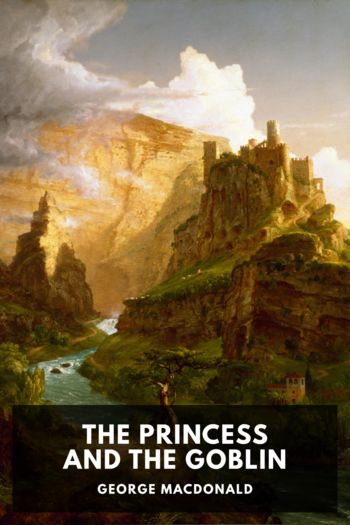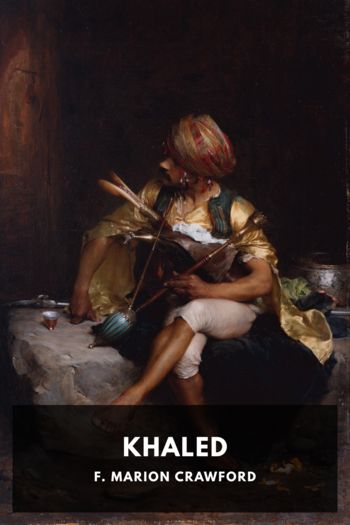Genre Other. Page - 302

Description
The Gadfly is set in 1840s Italy, at a time when the country was chafing under Austrian rule. The titular character is a charming, witty writer of pointed political satires who finds himself running with a crowd of revolutionaries. The plot develops as the revolutionaries struggle against the government and as the Gadfly struggles with a mysterious hatred of the Church, and of a certain Cardinal.
The novel, with its complex themes of loyalty, romance, revolution, and struggle against both establishment and religion, was very popular in its day both in its native Ireland and other countries like Russia and China. In Russia, the book was so popular that it became required reading. Since its publication it has also been adapted into film, opera, theater, and ballet, and its popularity spurred Voynich to write sequels and prequels.

Description
John Stuart Mill was a prolific and well-regarded author and philosopher in his day, but perhaps his most enduring work is On Liberty, an essay developed over several years and with significant input from his wife. In it, he applies his views on the Utilitarian ethical theory to systems of society and governance. The result became one of the most influential essays on liberal political thought in modern history.
In On Liberty Mill addresses such familiar concepts as freedom of speech, the importance of individuality, and the limits of society’s influence on the individual. He caps the discussion with an application of these principles to problems of the day, including education and the economy.

Description
Armageddon 2419 A.D. features the introduction of Buck Rogers, the famous sci-fi adventure hero of early comics and radio shows. Originally published in Amazing Stories in 1928, this novella was later combined with Nowlan’s sequel, The Airlords of Han, and re-published under this same title in the 1960s.
In it we follow Buck Rogers and his mysterious transportation to far-future America. The land was conquered by the evil Han Empire centuries ago, and the local Americans, scattered into competing gangs, are now starting a rebellion. Buck meets the leaders of one of the gangs and is swept up in the events.

Description
The Castle of Otranto is considered to be the first “Gothic” novel—that is, containing a combination of tropes, like hidden passages, haunted paintings, mysterious sounds, skeletal ghosts, ancestral curses, and unexplained deaths, that essentially invented the genre later made famous by authors like Edgar Allan Poe, Bram Stoker, or Henry James. Walpole made a point of creating a novel that blends supernatural elements with more realistic depictions of characters and events.
The plot centers around Manfred, the lord of Otranto Castle, who has just witnessed the death of his son under mysterious circumstances, just as his son was about to be married. Manfred is thrust into a galloping and melodramatic series of events that lean heavily on the supernatural.
Walpole initially published The Castle of Otranto under a pseudonym, claiming that his work was a translation of an ancient Italian manuscript. This framing, along with the purposely archaic writing style, gives the supernatural airs of the novel a decidedly authentic flavor. In later editions Walpole acknowledges his authorship.
Otranto remains a fast-paced and familiar read, thanks to the variety of recognizable tropes it introduced and made popular.

Description
The Secret Adversary, Agatha Christie’s second novel, introduces Tommy and Tuppence, the two much-loved mystery-solving adventurers.
The novel centers around a mysterious young girl, suffering from amnesia, who was present on the sinking of the Lusitania. As Tommy and Tuppence try to unravel the mystery, they find themselves embroiled with mysterious millionaires and the dangerous politics of nation-states.
Contemporary reviews of The Secret Adversary were positive, and the success of the novel paved the way not just for future Tommy and Tuppence adventures, but for a long, storied career of literary success for Christie.

Description
The Shaving of Shagpat isn’t just George Meredith’s first published novel, it’s also his only foray into fantasy literature. Shagpat sold poorly in its day despite good reviews, and after its disappointing sales Meredith pursed a career as a writer of romantic fiction instead. Despite its poor financial reception, Shagpat enjoys a good modern reputation and remains a classic of fantasy literature, with George Eliot going so far as to call it a “work of genius.”
The book is set in the medieval fantasy-Persia of the Arabian Nights and other oriental romances. Shibli Bagarag, a poor but talented barber, encounters a mystical crone named Noorna. Together they embark on a quest to save the city of Shagpat from a tyrant who holds the city under his command by virtue of the powers of his magical hair. On the way they battle genies and afreets, save princesses, hunt for treasures, and so on.
Meredith’s language is purposefully florid, evoking the richness of the setting, and his frequent usage of quotations and aphorisms from “the poet” give the fantasy a decidedly literate air.

Description
The Princess and the Goblin is a children’s fantasy novel in the vein of the best classic fairy tales. The simple narrative follows Princess Irene as she discovers a ghostly relative living in a castle tower only she can access. During a walk outside one day, she encounters the threat of the lair of goblins living near the castle—and meets a new friend, a young miner named Curdie. She and Curdie must stop the goblin threat before they can carry out their evil plot.

Description
Khaled is a hard-working and faithful genie who, in his zeal, goes a little too far and kills a faithless man. This puts him under scrutiny from the powers above, who curse him to live as a human. Since genies have no souls, he will vanish from existence when he dies; but, if he can find true love, he’ll be granted a soul and thus be allowed into heaven.
Written in the style of the “oriental romances” popular in those days, Khaled was F. Marion Crawford’s favorite novel out of all of the ones he wrote in his successful career.

Description
William Hazlitt was a well-regarded critic and essayist in his day, and Table-Talk, a collection of some of his more popular short essays, is perhaps his best-remembered work.
The essays themselves range in subject from philosophy, to art, to literature, culture, society, and politics, with titles like “On the Pleasures of Painting” and “On Corporate Bodies.” Hazlitt’s intimate style and deep familiarity with many different aspects of art culture (not only was he a literary success, but he studied under Joshua Reynolds to be a portrait painter) make his essays fascinating multi-disciplinary reads.
Table-Talk was originally published in two separate volumes, and, largely due to Hazlitt’s political activism, was received poorly by his contemporaries. Today it’s considered one of his masterpieces.

Description
The King in Yellow is a fascinating, almost two-faced work. The first half consists of five legendary weird tales, loosely tied together by a fictional play—the eponymous King in Yellow—that drives those who read it mad. Celebrated by authors like H. P. Lovecraft and Lin Carter, these stories are classic tales of madness, despair, and strange happenings.
With the fifth tale the reader finds a sort of palate-cleansing collection of short prose-poems leading into the last four stories, which take a sharp turn away from the weird and into the romantic. The concluding tales are set in the Parisian art world.
In modern times The King in Yellow enjoys a reputation largely due to the strength of its first half of macabre tales, but by no means does that make the second half less enjoyable. Both halves are written in a quick, light prose style that demonstrates why Chambers was a best-seller in his day.